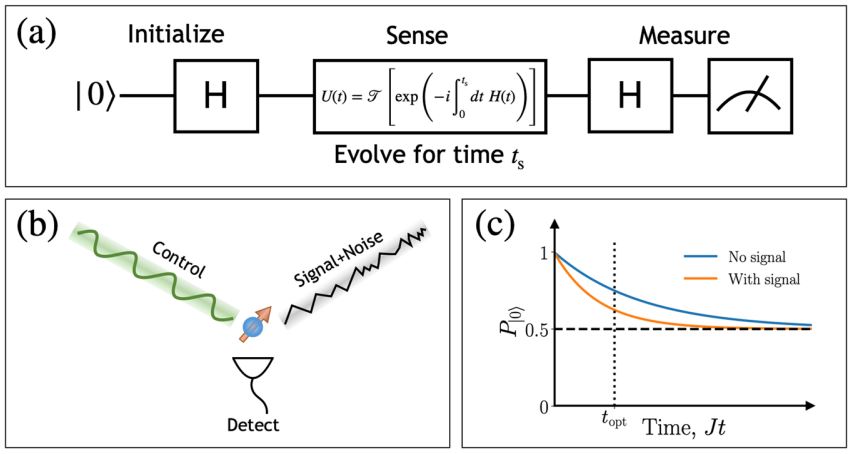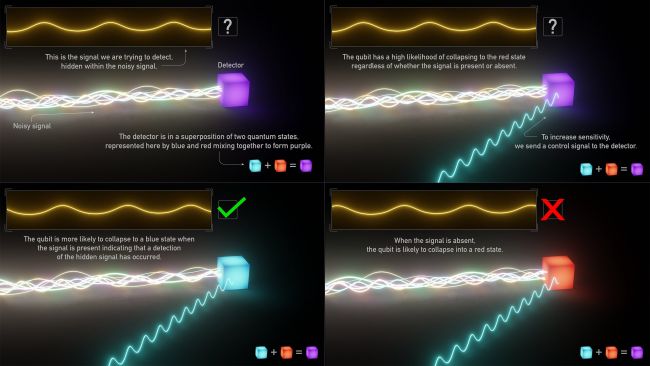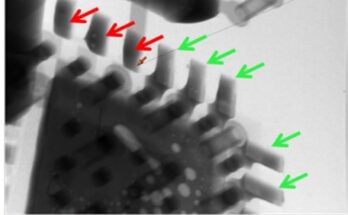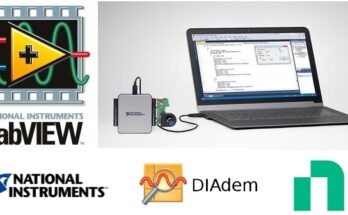The quantum world has always been described as nebulous and strange, far beyond from the real word that we can touch and see. It’s been proved the best theory for the sub-atomic world after quantum mechanics was established as one of the major branches of fundamental science. Since the early days of quantum mechanics, we have explored the real-world applications of quantum mechanics. Up to date, we have invented quantum computing and quantum cryptography that rely on qubits, units of information. We have known that quantum mechanics has many counterintuitive theories, such as entanglement, which supports that a microscopic particle can be found in many locations at one time or linked to counterpart instantaneously across infinitely long distance. These theories look strange to most people but intriguing to scientists who believe they can help create new tools for probing the uncharted waters.
Recently, researchers have utilized quantum mechanics to create sensing systems to measure various physical quantities, such as, magnetic field, electric field, time, frequency, temperature, pressure, movement, etc. These sensing systems are referred to quantum sensors. Examples of quantum sensor, include magnetometers based on superconducting quantum interference devices, gravimeters, gradiometers, nuclear magnetic, paramagnetic resonance, electron microscopes and atomic clocks. The area of quantum sensing has become so promising that the U.S. National Quantum Initiative Act was signed into law in 2018. According to NSF (National Science Foundation), in the next decade, breakthrough will be achieved in many applications of quantum sensing technology, such as next generation positioning and navigation, timing systems for military and commerce, and new methods for addressing complex problems in material science, chemistry and physics.
Quantum mechanics enable the new sensing methods to have capability of detecting very small signals even with high background noise. A team from John Hopkins University published a paper on March 25, 2021, reported their use of two theoretical tools of quantum information Science (QIS) to extract sensitive signals and reject strong background noise. The lead author of the paper, Parai Titum, said, “Our results are readily implementable in a variety of quantum computing and quantum sensing platforms such as superconducting qubits, NV-diamonds, and Silicon Carbide (SiC).” The team has applied filter functions and optimal quantum control theories to a use case of qubit (quantum bits) sensors that mirror a classical problem in signal detection theory: optimal detection of a known signal from background noise with a controllable quantum sensor. The team has already planned to utilize their method in detecting realistic signals in an experimental setting. Another plan of the team is to use the quantum entanglement to enhance detection likelihood as compared with classical sensors.

Reference
- Team finds an easier optimal detection scheme for near-term quantum sensors (phys.org)
- McDonald, A., Clerk, A.A. Exponentially-enhanced quantum sensing with non-Hermitian lattice dynamics. Nat Commun 11, 5382 (2020). https://doi.org/10.1038/s41467-020-19090-4
- Tetienne, JP. Quantum sensors go flat. Nat. Phys. 17, 1074–1075 (2021). https://doi.org/10.1038/s41567-021-01338-5
- Titum, P., Schultz, K., Seif, A. et al. Optimal control for quantum detectors. npj Quantum Inf 7, 53 (2021). https://doi.org/10.1038/s41534-021-00383-5
- Gilmore KA, Affolter M, Lewis-Swan RJ, Barberena D, Jordan E, Rey AM, Bollinger JJ. Quantum-enhanced sensing of displacements and electric fields with two-dimensional trapped-ion crystals. Science. 2021 Aug 6;373(6555):673-678. doi: 10.1126/science.abi5226. PMID: 34353950.
- Stephen Battersby, Core Concept: Quantum sensors probe uncharted territories, from Earth’s crust to the human brain, Proceedings of the National Academy of Sciences Aug 2019, 116 (34) 16663-16665; DOI: 10.1073/pnas.1912326116
- Scott E. Crawford,Roman A. Shugayev,Hari P. Paudel,Ping Lu,Madhava Syamlal,Paul R. Ohodnicki,Benjamin Chorpening,Randall Gentry,Yuhua Duan, Quantum Sensing for Energy Applications: Review and Perspective, First published: 15 June 2021, https://doi.org/10.1002/qute.202100049
- Degen, C. L., Reinhard, F., & Cappellaro, P. (2017). Quantum sensing. Reviews of modern physics, 89(3), 035002.




